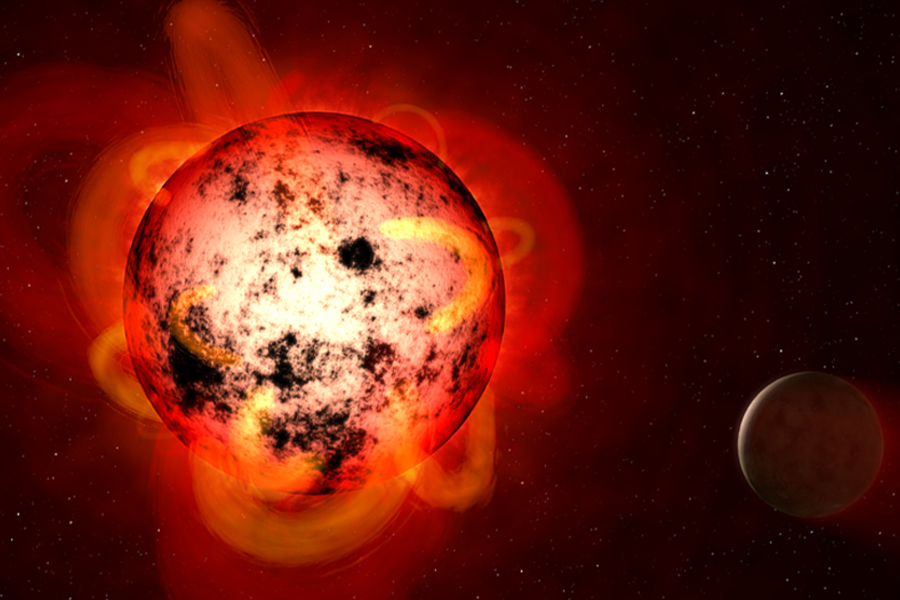- About▼
- Exo 101▼
- News
- Research▼
- Jobs + Internships▼
- Public Outreach▼
- Our Team▼
- Contact Us
- FR▼

Ariane Deslières, an iREx Masters student, completed her M.Sc. at Université de Montréal in 2023. Here, she summarizes her Masters research project.
To detect distant worlds orbiting stars several trillion kilometers from Earth, astronomers have had to develop truly ingenious techniques! Most techniques (such as the radial velocity and transit methods) focus on indirect detections of exoplanets: they study the effect of a planet’s presence on its host star, rather than the planet itself. 
In utilizing the radial velocity method, astronomers begin by breaking up a host star’s light to a spectrum, which describes the amount of light recorded at each wavelength – or colour. They then measure the variation in the amount and types of light recorded in this spectrum, which can be indicative of the presence of a planetary companion. However, several other factors can influence variations in the spectrum. One of them is linked to the star itself. The photosphere, the visible outer layer of a star, includes darker regions called stellar spots, caused by strong magnetic fields that restrict the movement of energy towards the surface. These spots can appear and disappear over time because of internal processes within the star. This phenomenon is part of what’s known as stellar activity. As the star rotates, the spots move, producing variations in the star’s spectrum similar to those induced by bodies orbiting it. This is why stellar activity modeling is essential when searching for exoplanets. There are many ways to study stellar activity. Several indicators, which can be explored via photometry and in examining the Full Width at Half Maximum (FWHM), obtained from the mean profile of spectral lines, can be modelled using mathematical tools such as Gaussian processes. Once this “activity model” has been established, it is possible to differentiate between stellar or exoplanetary origins of a signal.
As part of my Masters project, I studied the star GL229 A, a red dwarf located 19 light-years from Earth, around which orbits GL229 B, the first brown dwarf discovered by direct imaging in 1995. Halfway between giant planets and dwarf stars, brown dwarfs are substellar objects that have not acquired enough mass necessary to trigger fusion of hydrogen in their central cores. The GL229 system was also observed by various telescopes equipped with radial velocity instruments. This led, in 2014 and 2020, to the announcement of the detection of two exoplanets, GL229 A b and A c, which would have minimum masses of 32 and 7 Earth masses, respectively. My dissertation presents a new analysis of the radial velocities obtained with HARPS, a spectrograph installed on a telescope located in Chile. By modelling the FWHM with statistical tools, it can be shown that the signals that were previously identified as planetary in origin correspond in fact to stellar activity signals, i.e. from spots on the star’s surface! So the announced exoplanets don’t exist!
Ariane completed her MSc at UdeM between 2021 and 2023, under the supervision of iREx Director René Doyon. Her thesis will be available soon.
You must be logged in to post a comment.